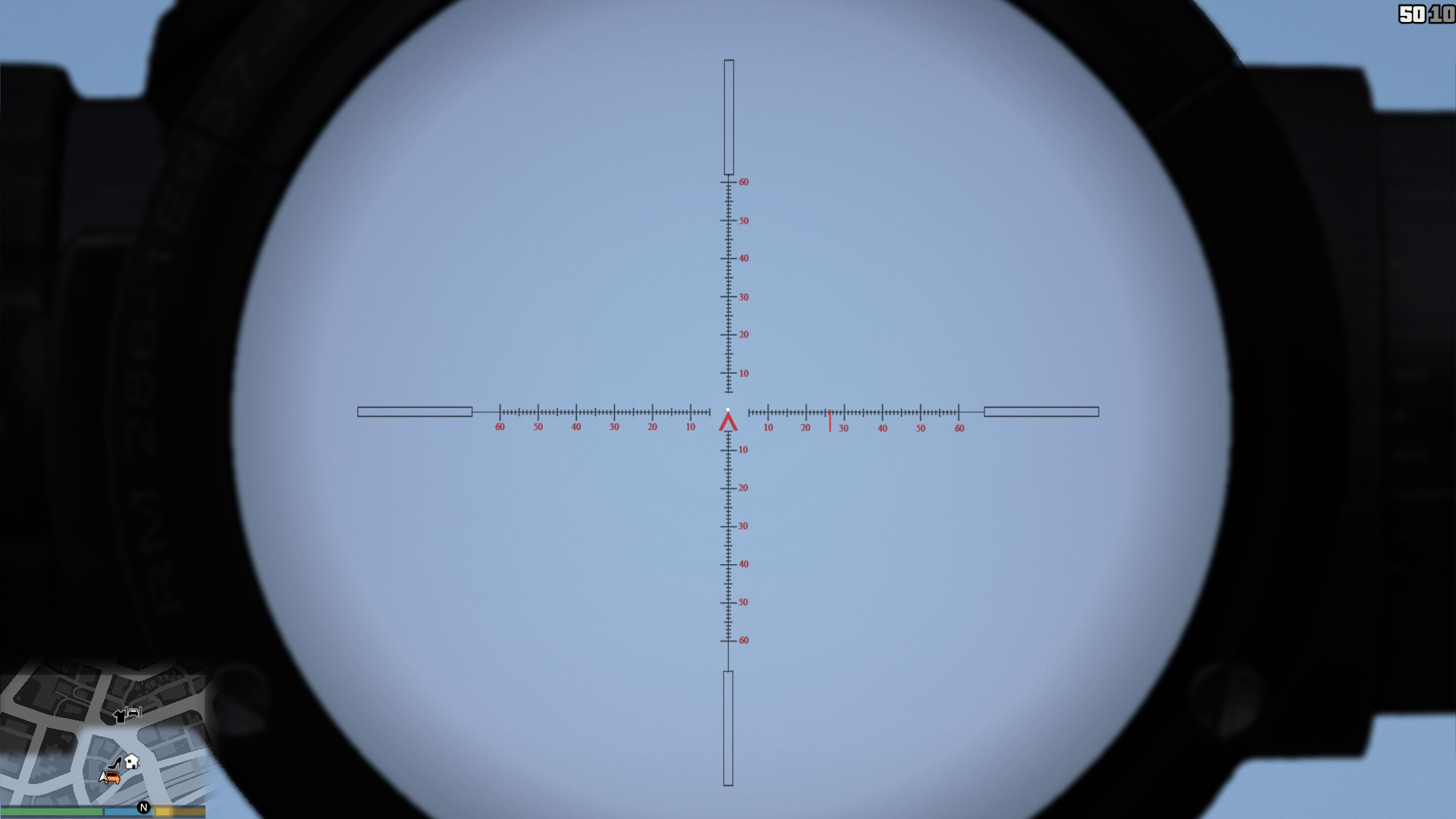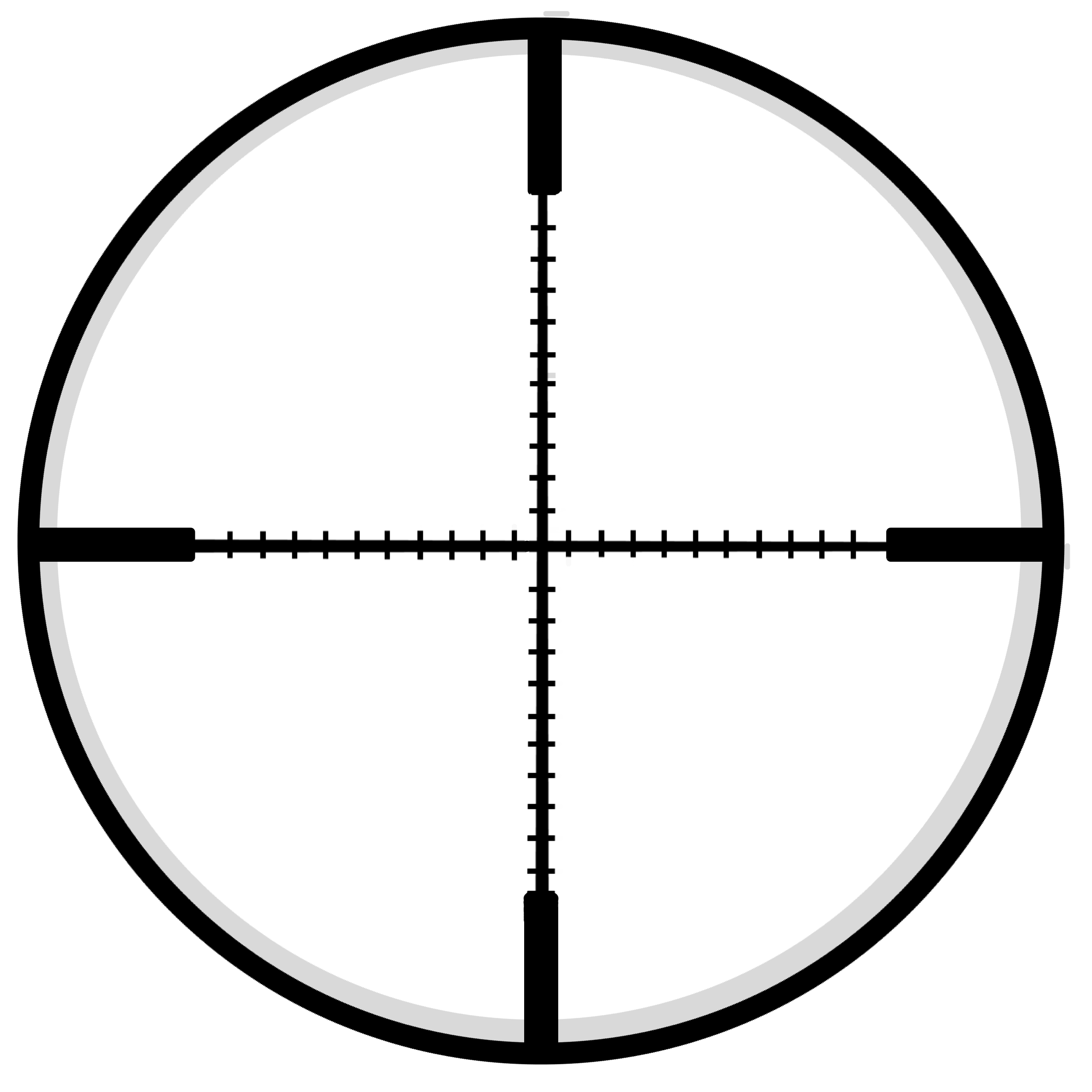
The thin bars in a duplex reticle may also be designed to be used as a measure. The thick bars allow the eye to quickly locate the center of the reticle, and the thin lines in the center allow for precision aiming. The most popular types of cross-hair in modern scopes are variants on the duplex cross-hair, with bars that are thick on the perimeter and thin out in the middle. Thicker bars are much easier to discern against a complex background, but lack the precision of thin bars. While the traditional thin crossing lines are the original and still the most familiar cross-hair shape, they are really best suited for precision aiming at high contrast targets, as the thin lines are easily lost in complex backgrounds, such as those encountered while hunting. Motion pictures and the media often use a view through crosshairs as a dramatic device, which has given crosshairs wide cultural exposure. Telescopic sights for firearms, generally just called scopes, are probably the device most often associated with crosshairs. Another candidate as inventor is the amateur astronomer William Gascoigne, who predated Hooke. The reticle is said to have been invented by Robert Hooke, and dates to the 17th century.

Most commonly associated with telescopic sights for aiming firearms, crosshairs are also common in optical instruments used for astronomy and surveying, and are also popular in graphical user interfaces as a precision pointer. Crosshairs are typically represented as a pair of perpendicularly intersecting lines in the shape of a cross, "+", though many variations of additional features exist including dots, posts, concentric circles/ horseshoes, chevrons, graduated markings, or a combination of above.

There are many variations of reticle pattern this article concerns itself mainly with the most rudimentary reticle: the crosshair. Both terms may be used to describe any set of patterns used for aiding visual measurements and calibrations, but in modern use reticle is most commonly used for weapon sights, while graticule is more widely used for non-weapon measuring instruments such as oscilloscope display, astronomic telescopes, microscopes and slides, surveying instruments and other similar devices. Today, engraved lines or embedded fibers may be replaced by a digital image superimposed on a screen or eyepiece. Reticle accessory (PD-8) used in sniper riflesĪ reticle, or reticule also known as a graticule, is a pattern of fine lines or markings built into the eyepiece of an optical device such as a telescopic sight, spotting scope, theodolite, optical microscope or the screen of an oscilloscope, to provide measurement references during visual inspections.


 0 kommentar(er)
0 kommentar(er)
